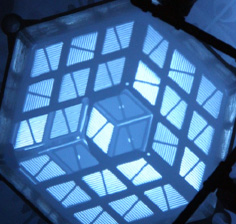About
The MIT Nuclear Reactor Laboratory (MIT-NRL) is an interdepartmental center that operates a high performance 6 MW nuclear research reactor known as the MITR. It is the second largest university research reactor in the U.S. and the only one located on the campus of a major research university. During its long and distinguished history, the NRL has supported educational training and cutting-edge research in the areas of nuclear fission engineering, material science, radiation effects in biology and medicine, neutron physics, geochemistry, and environmental studies.
It is the only university research facility in the U.S. where students can be directly involved in the development and implementation of nuclear engineering experimental programs with neutron flux levels comparable to power reactors. The MITR is an indispensable resource for developing the workforce for the future of nuclear power.
The MITR is equipped with experimental facilities available to users both within and outside MIT. The NRL staff provides technical assistance for research projects for high school students, undergraduate and graduate students, university researchers and faculty members, and national laboratory users.
The MIT Reactor
The MITR is a light-water cooled and moderated, heavy-water reflected, reactor that utilizes flat, finned, aluminum-clad, plate-type, fuel elements. The average core power density is about 70 kW per liter. The maximum fast and thermal neutron flux available to experimenters are 1.2x1014 and 6x1013neutrons/cm2-s, respectively. Experimental facilities available at the MIT research reactor include two medical irradiation rooms, beam ports, automatic transfer facilities (pneumatic tubes), and graphite-reflector irradiation facilities. In addition, several types of in-core experimental facilities are available.
The MITR encompasses a number of inherent (i.e., passive) safety features, including negative reactivity temperature coefficients of both the fuel and moderator; a negative void coefficient of reactivity; the location of the core within two concentric tanks; the use of anti-siphon valves to isolate the core from the effect of breaks in the coolant piping; a core-tank design that promotes natural circulation in the event of a loss-of-flow accident; and the presence of a full containment. These features make it an exceptionally safe facility.
The MITR generally operates 24 hours a day, 7 days a week, except for planned outages for maintenance.


